What are Rotary Switches
Rotary switches are versatile electrical components used to control the functionality of a wide range of devices by rotating a knob or dial to select one of multiple positions. They operate on a simple principle: as the switch turns, different circuits are opened or closed, allowing current to flow through different paths. This mechanism enables the user to control various settings such as speed, direction, or function of a device.
Typically, rotary switches are comprised of a spindle or rotor that rotates within a body of stationary contacts, or positions. As the spindle turns, it either makes or breaks connections with these contacts. The number of positions on a rotary switch can vary, with some common configurations including 2-position, 3-position, up to 12-positions or more, allowing for a broad range of applications.
Rotary switches are designed for various users ranging from industrial engineers who incorporate them into complex machinery to everyday consumers using appliances that require setting adjustments. Their robust and reliable nature makes them suitable for heavy-duty industrial environments as well as for household appliances like ovens and fans.
The construction of these switches may vary according to the application; they can be made out of plastic, metal, or other durable materials that can withstand the electrical load and environmental conditions they will be subjected to. As an integral part of electrical systems, rotary switches play an essential role in managing operational modes and ensuring user control over electronic devices.
Types of Rotary Switches
Rotary switches come in several types, each tailored to specific applications and operational requirements.
Single-deck Rotary Switch: A single-deck rotary switch has one layer of contacts and is commonly used for simple circuit control functions. It is often found in applications such as selecting fan speeds in home appliances or changing input sources on audio equipment.
Multi-deck Rotary Switch: Multi-deck switches have multiple layers of contacts, allowing for control over several circuits simultaneously. This type is suitable for more complex operations in industrial controls where multiple parameters need adjustment.
Non-shorting (Break-before-make) Rotary Switch: These switches break the connection with the current position before making contact with the next one. They're used in situations where it's important to avoid short circuits between adjacent positions, such as in audio equipment to prevent loud pops or clicks while switching.
Shorting (Make-before-break) Rotary Switch: Conversely, shorting switches make contact with the new position before breaking from the old one. This ensures that there's no interruption in connectivity, which can be crucial in power distribution or signal routing applications.
Pole and Throw Configurations: The complexity of rotary switches can also be described by their number of poles (circuit paths) and throws (connection points). For instance, a single-pole three-throw (SP3T) switch can connect one input to three outputs.
How to choose Rotary Switches
Choosing the right rotary switch requires careful consideration of its intended use and the demands of the application. Businesses should evaluate several factors:
Number of Positions: Determine how many different settings or functions you need to control. A higher number of positions allows for more control options but can also increase the size and complexity of the switch.
Current Rating: Assess the electrical load that the switch will need to handle. Ensuring that the switch can cope with the current demands is crucial for safety and longevity.
Material: Consider the environment where the switch will be used. Materials like stainless steel or hardened metals are suitable for harsh industrial conditions while plastic may suffice for less demanding environments like household appliances.
Mounting Features: Check whether you need a front-of-panel or back-of-panel mounting feature depending on your design specs and space constraints.
Customization: Some businesses may require customized features like specific color coding for knobs, additional functions like remote control capabilities, or custom wiring configurations for integration into their systems.
Best Rotary Switches on Alibaba.com
Alibaba.com stands out as a global marketplace connecting businesses with a vast selection of rotary switches suitable for any application—from simple household gadgets to complex industrial machinery. With an extensive network of suppliers offering products made from various materials like metal, plastic, and stainless steel in numerous configurations and colors, Alibaba.com caters to all your rotary switch needs under one roof.
The platform's user-friendly interface simplifies the process of finding switches with specific features such as circuit control capabilities or overheat protection functions vital for safety in electronic devices. Moreover, Alibaba.com provides detailed datasheets and media resources such as photos and EDA/CAD models to assist buyers in making informed decisions.
For businesses concerned about reliability and transaction security, Alibaba.com offers Trade Assurance—a service designed to protect payments until delivery is confirmed. This commitment to facilitating secure and efficient trade transactions makes Alibaba.com an ideal source for purchasing wholesale rotary switches tailored to your business requirements.
Common FAQs for Rotary Switches
What is a rotary switch and how does it work?
A rotary switch is an electrical switch that allows the user to control different circuits by rotating a knob to various positions. It operates by making or breaking connections with a series of contacts as the dial turns, enabling control over multiple settings.
How many positions can a rotary switch have?
Rotary switches can range from having just two positions to more than 12 positions, allowing for a wide range of control options depending on the specific needs of the application.
What are the different types of rotary switches available?
There are several types of rotary switches, including single-deck, multi-deck, non-shorting (break-before-make), shorting (make-before-break), and various pole and throw configurations for different levels of circuit complexity.
What materials are rotary switches made from?
Rotary switches can be made from a variety of materials such as plastic, metal, stainless steel, aluminum, steel alloy, copper, and other durable substances to suit different application environments and electrical loads.
In what applications are rotary switches commonly used?
Rotary switches are used in a myriad of applications including household appliances, industrial equipment, instrumentation panels, commercial settings, and vehicles like cars and RVs.
How do I choose the right current rating for a rotary switch?
When selecting a rotary switch, it's imperative to choose one with a current rating that meets or exceeds the maximum current your application will require to ensure safety and durability.
Can rotary switches be customized for specific applications?
Yes, many suppliers offer options for customized support such as color coding for knobs, remote control functions, and specific wiring configurations to integrate seamlessly into your systems.
What is the difference between a single-deck and multi-deck rotary switch?
A single-deck rotary switch controls one circuit per position while a multi-deck rotary switch can control multiple circuits simultaneously due to having several layers of contacts.
What are non-shorting and shorting rotary switches used for?
Non-shorting (break-before-make) rotary switches prevent short circuits between positions and are used in applications like audio equipment. Shorting (make-before-break) rotary switches ensure continuous connectivity and are common in power distribution.
How do I know if I need a front-of-panel or back-of-panel mounting feature?
This depends on your design specifications and the available space within your device. Front-of-panel mounting is accessible from the front while back-of-panel mounting is integrated into the device's enclosure.
Are there waterproof or weather-resistant rotary switches available?
Yes, suppliers offer rotary switches with varying degrees of protection against elements like water and dust. It's important to look for features like IP65 ratings if you require weather-resistant capabilities.
What is Trade Assurance on Alibaba.com and how does it benefit my purchase of rotary switches?
Trade Assurance is a service offered by Alibaba.com that protects payments until delivery is confirmed. It provides added security for transactions, ensuring that your investment in rotary switches is protected.



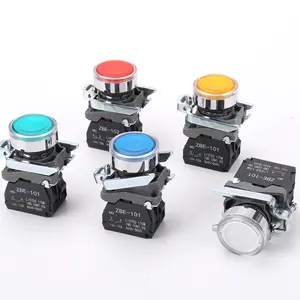



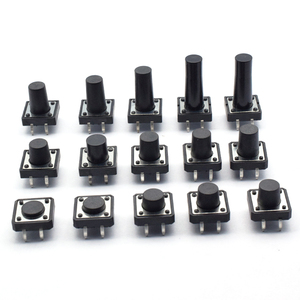


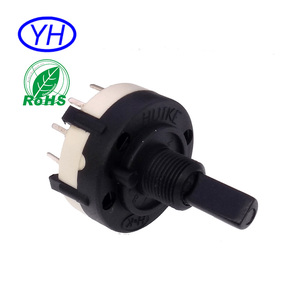


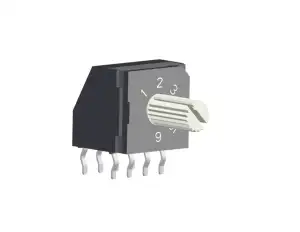

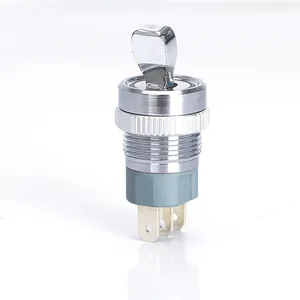


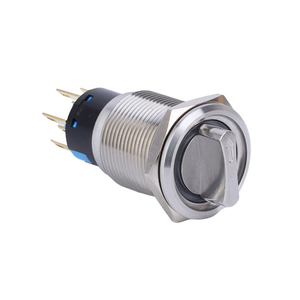

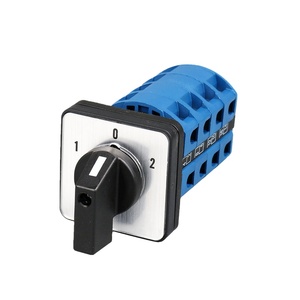


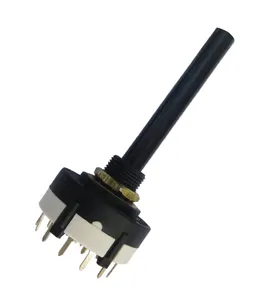



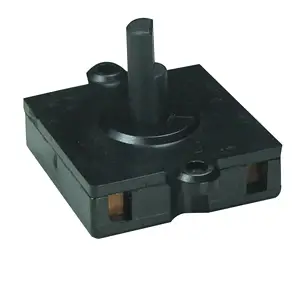




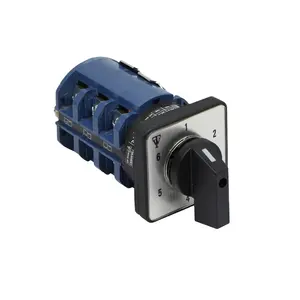
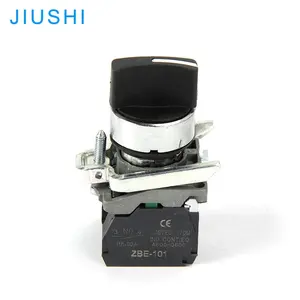




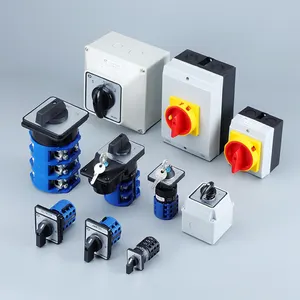

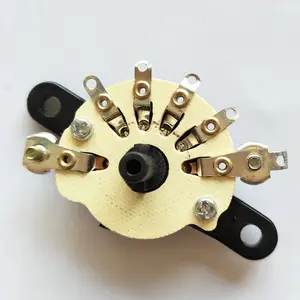





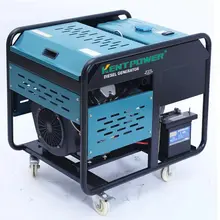
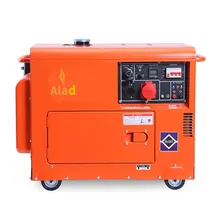
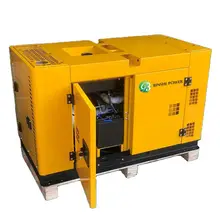

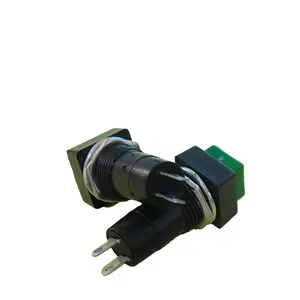




















 浙公网安备 33010002000092号
浙公网安备 33010002000092号 浙B2-20120091-4
浙B2-20120091-4